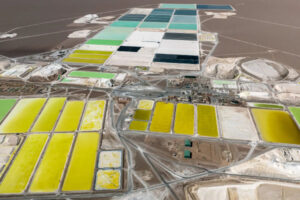These kinds of nodules are formed, according to the researchers, by the precipitation of iron and manganese oxides dissolved in saltwater around their nuclei. The deposits also include copper, which is a valuable element.
Japan has struck precious metal in the age of electric vehicles, having discovered enormous mineral resources close to a remote island in its major economic zone.

Researchers have discovered enough mineral resources on the seafloor in Minami-Torishima to feed the nation with nickel for more than ten years and enough cobalt to last for 75 years.
The manganese resources, estimated to contain 230 million tonnes, are discovered as fist-sized nodules. NIKKEI Asia reported that the nodules had a manganese content of around 20% and a nickel and cobalt content of up to 1%.
Abundance of Manganese, Cobalt, and Nickel
Because they are significant components of lithium-ion batteries, manganese, cobalt, and nickel are becoming more necessary for increasing the manufacturing of electric vehicles.
The deposits, which cover an area of around 10,000 square meters, are thought to contain nearly 610,000 tonnes of cobalt and 740,000 tonnes of nickel, according to the experts.
The Mineral Hunt
Since 2016, the area surrounding the mineral finding on Japan’s Minami-Torishima island has being monitored. On the other hand, a thorough investigation of the location began in April of last year and ran until early June of 2024.
The comprehensive survey results indicated significant mineral reserves in the region and showed encouraging trends.
The seafloor was between 5,200 and 5,700 meters deep, and the researchers employed mining equipment and remotely operated underwater vehicles to conduct the probe at several locations.
These kinds of nodules are formed, according to the researchers, by the precipitation of iron and manganese oxides dissolved in saltwater around their nuclei. The deposits also include copper, which is a valuable element.
Can Japan Now Become a Dominant Player on the EV Battery Industry
Japan’s EV sector will benefit greatly from the mineral finding since it will become less dependent on other nations.
Japan may be able to meet its domestic demand for EV batteries thanks to this finding, and China may face significant competition on the international stage.
By the end of March 2026, the research team—which is made up of the University of Tokyo and the nonprofit Nippon Foundation—aims to “start extracting 2,500 tons of the mineral resource per day in an experimental project.”
In addition, the Nippon Foundation wants to establish a partnership so that production may be commercialized in Japan by 2026.
The team states that there are sufficient mineral resources for commercial usage, accounting for expenses associated with extraction and processing.
According to NIKKEI Asia, Yasuhiro Kato, a professor at the University of Tokyo and member of the team that made the 2016 discovery, the nodules are “concentrated and offer quite good materials.”
Additionally, Kato advocates for “building the next-generation energy infrastructure and creating new industries in Japan by utilizing domestic seafloor mineral resources.”
According to him, the researchers intend to collaborate with other businesses to create environmentally friendly goods and technology by making use of the natural resources in the vicinity of the island, which is around 1180 miles (1,900 kilometers) from Tokyo, the capital of Japan.
According to a University of Tokyo press release, “in the end, we hope that our research results will contribute to Japan’s growth by establishing a domestic supply chain stretching from’resource-mining’ to’manufacturing’, and make Japan a science-technology-, and ocean-oriented nation in a true sense of word.”
The story has been developed with inputs from Interesting Engineering




